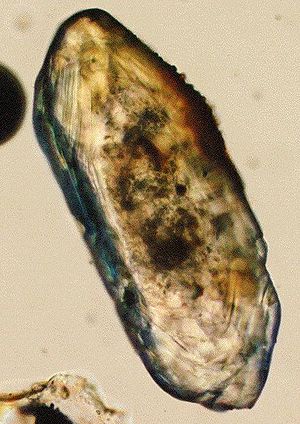End-Triassic mass extinction link to CAMP: It's official?
Mass extinctions and smaller but significant die-offs in the marine and terrestrial domains have been linked in the geoscientific imagination with many things: asteroid impacts; gamma-ray bursts from distant supernovae; belches of methane from the sea floor; emissions of hydrogen sulfide gas from seawater itself during ocean anoxia events; sea-level changes and more. The most intriguing, since it suggests a causal link between the core-mantle boundary and the biosphere, is the influence of flood basalt events and the gases, both greenhouse and toxic, that they undoubtedly released.
The famous K-T extinction (now K-Pg since the Palaeogene became the Period following the Cretaceous rather than the Tertiary) has swayed back and forth between the Chicxulub impact in Mexico's Yucatán Peninsula and the flood basalts of the Deccan Traps in western India as likely mechanisms, Chicxulub currently being in pole position. The equally devastating event at the close of the Triassic (at 201 Ma) that presaged the rise of the dinosaurs has had a similar external versus internal causality controversy, both the Rochechouarte crater and the Central Atlantic Magmatic Province being candidates.
Rochechouarte, however, was nowhere near as energetic an event as the Chicxulub impact. The problem is, as with all events for which the weight of evidence points to very short time scales – of the order of tens to hundreds of thousand years, is the dating of candidate causes. Rochechouarte happened at 201±2 Ma: it may or may not have coincided with faunal change. Yet timing of the CAMP flood basalts has hitherto been even more coarsely tagged. This imprecision is not unconnected with the choice of radiometric dating methods, the 40Ar/39Ar approach being 'easy' and hence popular, but limited in its precision and accuracy. The 'gold standard' is zircon U-Pb geochronology that depends on the far greater reluctance of the host mineral to lose either parent or daughter isotopes compared with the feldspars, micas and amphiboles used in many other methods. Zircon still in its igneous parent is crucial: it is so durable that vastly older zircons are often found in sediments. Yet basalts contain few zircons.
Zircon geochronology has now emerged from the CAMP flood basalts of eastern Canada, the Atlantic seaboard of the US and that of Morocco, which has a precision of around 30 ka, one to two orders of magnitude better than other methods (Blackburn, T.J. and 8 others 2013. Zircon U-Pb geochronology links the end-Triassic extinction with the Central Atlantic Magmatic Province. Science, v. 340, p. 941-945). The extinction is defined most readily by a sudden change in fossil pollen and spores, possibly within less than 10 ka, as well as extinction of Triassic marine fauna and large numbers of terrestrial reptile and amphibian taxa followed by diversification of early Jurassic dinosaurs. The oldest CAMP basalts are from Morocco immediately above spores of clearly Triassic age; i.e. before the extinction, whereas the basalt flows in Canada and the eastern US (a mere 3 to 13 ka younger)are above the turnover. So, the start of the CAMP flood volcanism brackets the extinction.
But did CAMP cause, indeed could it have caused the extinction? Blackburn and colleagues cannot be certain. A negative carbon-isotope spike associated with the extinction is estimated to have required almost a million km3 of magma to have been erupted almost instantaneously to inject excess CO2 into the atmosphere. The dating suggests four major pulses of eruption in the areas studied spread over around 600 ka, the last three being associated with biological diversification and recovery in the earliest Jurassic. In fact the research seems merely to suggest strongly that flood volcanism accompanied the extinction, but leaves its causing the death toll still an open question.
The CAMP events marked the beginning of Pangaea's break-up and the formation of Tethys separating Eurasia and North America from the old Gondwana continental mass. That tropical seaway became the site of massive production of marine carbonates, presumably to draw down any carbon dioxide excess in the atmosphere
--
__._,_.___


No comments:
Post a Comment